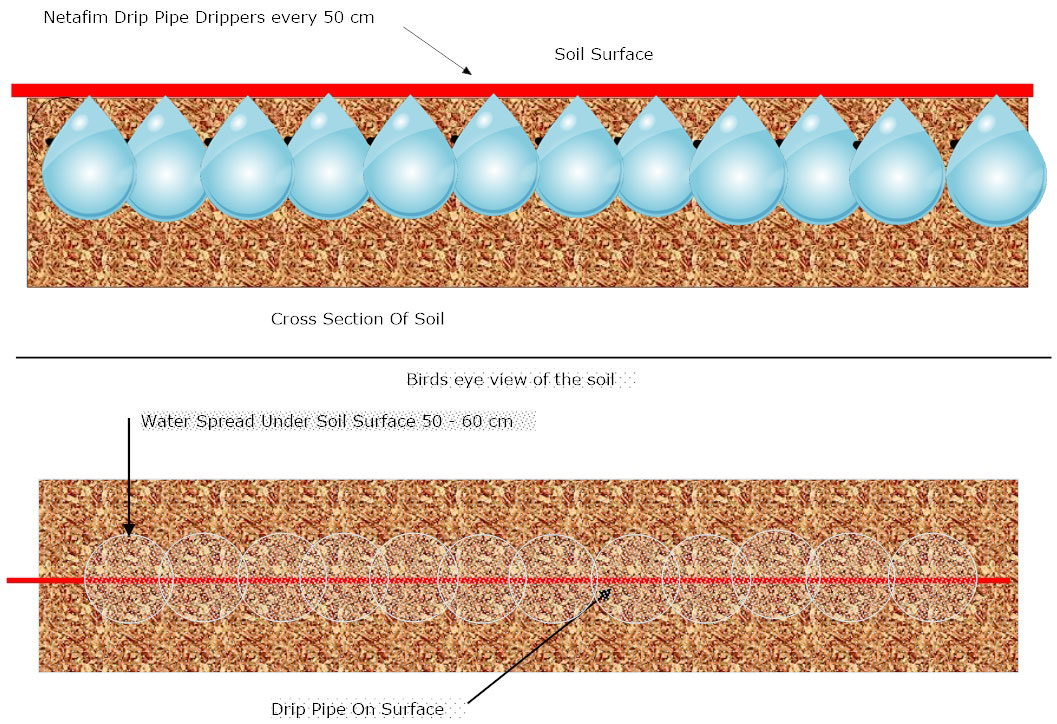Porous pipe or leaky pipe that looks like rubber with lots of holes in is made from recycled tyres along with other material. The pipe drips along its entire length however there is no control or calculation that can be put on the pipe as the drip is very random because of the nature of the pipe. What this means is that we cannot be sure how much can be used before the water pressure falls below a certain level which would then leave the pipe dripping at the beginning of the pipe but with little or no water dripping out at the far end.
When porous pipe is used with hedging over a long length we can see after a few years the erratic dripping as the hedge grows at an erratic speed with plants near the source receiving more water than those at the end of the pipe.
Porous pipe drips along its entire length which again is not the ideal as water spreads under the soil surface and so to much water is applied over the length of the pipe.
Porous pipe can clog easily and this again leaves us with erratic watering patterns that can leave areas totally dry
Pressure Compensated drip pipe.
Unlike porous pipe pressure compensated drip pipe leaks at a uniform rate. We can apply calculations to the pipe and know for certainty how much water is being applied per square metre. We know that the same amount of water will be applied to the first and last plant in the run. With pressure compensated drip pipe we know that the volume of water applied to the bed , border or hedge will not fall along the run. Pressure compensated drip pipe leaves the majority of the soil surface dry which reduces the amount of evaporation and reduces the amount of annual weeds that can germinate. Pressure compensated drip pipe has had years of research and development put in to the product and is the most used drip pipe Worldwide because it can be used commercially with confidence



